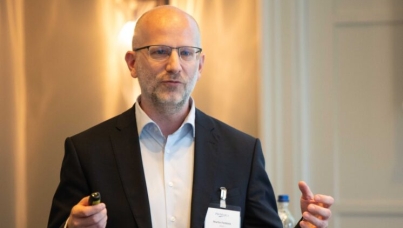Global attitudes to happiness and quality of life
Key findings:
- Most people are happy. On average across 30 countries 71% say they are happy with 29% unhappy.
- However, long term we are getting less happy. Ipsos has been tracking global happiness since 2011 and of the 20 countries in that first survey, 15 are less happy than 14 years ago.
- We are happiest in old age. People in their 60s and 70s are the most likely to say they are happy (75% and 76% respectively), while those in their 50s are the least happy (68%).
- Not enough money brings unhappiness. Across generations, income levels and countries, people agree that my financial situation is the biggest cause of unhappiness.
- Family and feeling loved is what makes us happy. My family and children and feeling appreciated/loved are viewed as the two biggest reasons people are happy.
Where are people happiest?
Across 30 countries 71% on average say they are happy with 29% unhappy. In India 88% say they are happy, the highest in our survey of 30 countries, with 86% in the Netherlands saying the same. Hungary is the country where happiness is lowest. Only 45% of Hungarians say they are happy, which the second lowest score we have recorded since we started tracking happiness in 2011 (Türkiye 42% in 2021 is the other).
Are we getting happier?
Long term we are getting less happy. Ipsos has been tracking global happiness since 2011 and of the 20 countries in that first survey, 15 are less happy than 14 years ago. Türkiye, the happiest country in 2011, has seen the biggest decline in happiness (-40pp), followed by South Korea (-21pp), Canada (-18pp) and the United States (-16pp).
While Canada and the United States saw a decline in happiness in 2020 during the Covid -19 pandemic, it’s been rising inflation and greater impact on cost of living that seen Canadians and Americans feeling less happy. In December 2021, 76% of Americans and 80% of Canadians described themselves as happy. In 2025 this is down to 69% and 67% respectively. Two-thirds from both countries say their financial situation is what is making them unhappy.
Looking at who is happier over time, Spain has seen the biggest increase since 2011 (up 11pp to 72% in 2025). In the December 2011 edition of our What Worries the World survey, 86% in Spain said unemployment was one of their top concerns, with the unemployment rate in the country hitting 23% during the year. In 2024 the rate had fallen to 11% and proportion in Spain worried about unemployment has fallen to 28% in our latest What Worries the World report.
When are people happiest?
The perception is happiness is a U-shaped curve with people happy when they are young, less happy in middle age then happiest when they are older. Our data finds this to be the case for men, but among young women they do not seem to have higher rate of happiness in their 20s with happiness staying at the same level towards their 60s.
People in their 60s and 70s are the most likely to say they are happy (75% and 76% respectively), while those in their 50s are the least happy (68%).
What makes us happy and unhappy?
Across generations, income levels and countries, people agree that my financial situation is the biggest cause of unhappiness. Of those who are unhappy, 58% say their finances cause them to feel this way. While only 24% say their financial situation makes them happy.
My family and children and feeling appreciated/loved are viewed as the two biggest reasons people are happy. However, unlike what makes us unhappy, there is less agreement on happiness. Older generations are more likely to say family makes them happy, while younger generations believe feeling appreciated brings them joy.


